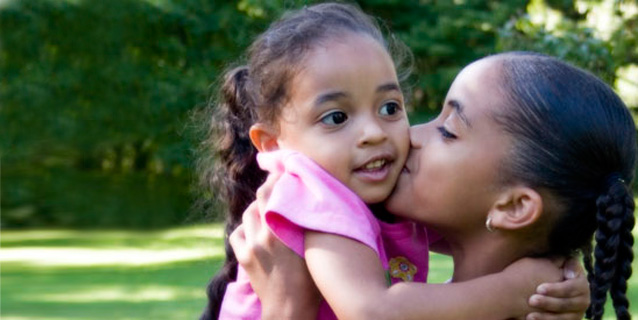What Is the FOCUS©?

Focus on the Outcomes of Communication Under Six (FOCUS © ) is a clinical tool designed to evaluate change in communicative-participation in preschool children. ‘Communicative participation’ is the child’s communication and interaction in “real world” situations at home, school, or in the community (Eadie et al., 2006).
The FOCUS is a valid, reliable, responsive treatment outcome measure that captures ‘real world’ changes following speech and language treatment. The FOCUS links speech and language treatment to the child’s ability to communicate and participate in their world. There are two versions of the measure, one designed for parents and one for clinicians. The items on both versions are the same.
Why do we need FOCUS?
Clinicians and families are always interested in knowing whether speech language therapy treatment makes a difference. To evaluate communication changes over time, we need measures (‘tools’) that are designed for the job. The Speech-Language & Audiology Canada(SAC-OAC) issued a position statement encouraging the use and development of outcome measures by speech-language pathologists and audiologists. They state that outcome measures should be used to improve practice in an evidence-based manner, in the best interests of clients (Outcome Measures Position Statement).
In order to ’measure up’, a tool needs to be validated (i.e., proven by research evidence) to be able to assess change over time in a meaningful way. The tool also needs to be reliable – that is, able to provide consistent information over time, and between times. It should also be clinically sensible (i.e., measure things we think are important) and easy to use (Rosenbaum et al., 1990).
Too often we use the wrong ‘tools’ for the job of measuring change – for example using a norm-referenced standardized test that is not designed to capture change. If the tool does not measure change when it has really happened, we may conclude (wrongly) that the treatment didn’t work, when in fact it was the measure that didn’t ‘work’!
The FOCUS measure created by Nancy Thomas-Stonell and her colleagues was developed using the principles of modern measurement science to ensure that it "does the job!"
How was the FOCUS and FOCUS-34 developed?
The FOCUS was developed over a 13 year time span. It was developed with parent and clinician input at 11 partner sites in 5 Provinces across Canada.
Parents of 210 preschool children and their clinicians were asked to describe the changes they observed following treatment (Thomas-Stonell et al., 2009). The comments aligned with the World Health Organization’s ICF-CY framework (WHO, 2007). FOCUS items were developed using the parents’ own wording.
The FOCUS measure was tested three times with 165 families and their clinicians. It was revised after each test phase using measurement science and parent/clinician feedback. Using this process, the FOCUS measure was reduced from 103 to 50 items. As the FOCUS was revised, most of the Body Function items were eliminated. There was an increased emphasis on ICF-CY Activities and Participation domain, especially performance items (Thomas-Stonell et al, 2010).
How was the FOCUS-34 developed?
In response to clinician and parent requests, we investigated the possibility of increasing the clinical efficiency of the FOCUS by reducing the total number of items while retaining its validity as a change detecting measure.
FOCUS change data on approximately 18,000 children were reviewed. Items that were less sensitive to change, were answered similarly for all children (i.e. didn’t discriminate well) or were strongly correlated to each other were removed, leaving 34 items. The FOCUS-34 change scores were found to predict change scores from the original FOCUS almost perfectly. The FOCUS-34 preserves the clinical integrity, internal consistency, reliability, and validity of the full FOCUS.
What do FOCUS items look like?
Sample FOCUS questions for Activity:
“My child uses new words.”
“My child can string words together.”
“My child uses words to ask for things.”
“My child talks a lot.”
Sample FOCUS questions for Participation:
“My child is included in play activities by other children.”
“My child gets along with other children.”
“My child is included in games by other children.”
“My child can communicate effectively with other children.”
ICF-CY Coding Sheet
FOCUS background information videos
FOCUS videos from the June 2012 Launch Workshop
Measures and Measurements
Peter Rosenbaum
Development and Validation
Nancy Thomas-Stonell
Using the Communications Function Classification System (CFCS)
Mary Jo Cooley Hidecker